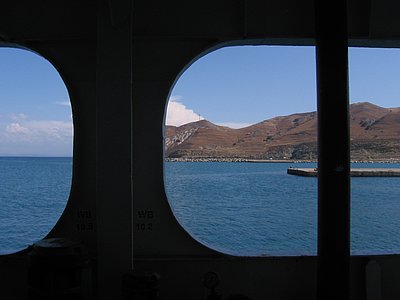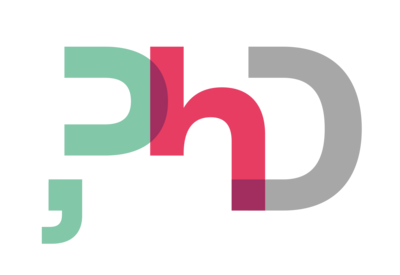Welcome at the Interface Culture program website.
Acting as creative artists and researchers, students learn how to advance the state of the art of current interface technologies and applications. Through interdisciplinary research and team work, they also develop new aspects of interface design including its cultural and social applications. The themes elaborated under the Master's programme in relation to interactive technologies include Interactive Environments, Interactive Art, Ubiquitous Computing, game design, VR and MR environments, Sound Art, Media Art, Web-Art, Software Art, HCI research and interaction design.

The Interface Culture program at the Linz University of Arts Department of Media was founded in 2004 by Christa Sommerer and Laurent Mignonneau. The program teaches students of human-machine interaction to develop innovative interfaces that harness new interface technologies at the confluence of art, research, application and design, and to investigate the cultural and social possibilities of implementing them.
The term "interface" is omnipresent nowadays. Basically, it describes an intersection or linkage between different computer systems that makes use of hardware components and software programs to enable the exchange and transmission of digital information via communications protocols.
However, an interface also describes the hook-up between human and machine, whereby the human qua user undertakes interaction as a means of operating and influencing the software and hardware components of a digital system. An interface thus enables human beings to communicate with digital technologies as well as to generate, receive and exchange data. Examples of interfaces in very widespread use are the mouse-keyboard interface and graphical user interfaces (i.e. desktop metaphors). In recent years, though, we have witnessed rapid developments in the direction of more intuitive and more seamless interface designs; the fields of research that have emerged include ubiquitous computing, intelligent environments, tangible user interfaces, auditory interfaces, VR-based and MR-based interaction, multi-modal interaction (camera-based interaction, voice-driven interaction, gesture-based interaction), robotic interfaces, natural interfaces and artistic and metaphoric interfaces.
Artists in the field of interactive art have been conducting research on human-machine interaction for a number of years now. By means of artistic, intuitive, conceptual, social and critical forms of interaction design, they have shown how digital processes can become essential elements of the artistic process.
Ars Electronica and in particular the Prix Ars Electronica's Interactive Art category launched in 1991 has had a powerful impact on this dialog and played an active role in promoting ongoing development in this field of research.
The Interface Cultures program is based upon this know-how. It is an artistic-scientific course of study to give budding media artists and media theoreticians solid training in creative and innovative interface design. Artistic design in these areas includes interactive art, netart, software art, robotic art, soundart, noiseart, games & storytelling and mobile art, as well as new hybrid fields like genetic art, bioart, spaceart and nanoart.
It is precisely this combination of technical know-how, interdisciplinary research and a creative artistic-scientific approach to a task that makes it possible to develop new, creative interfaces that engender progressive and innovative artistic-creative applications for media art, media design, media research and communication.
PHD-KOLLOQUIUM
3. bis 5. Juni 2025 Kunstuniversität Linz, Domgasse 1, Audimax & weitere Orte
Herzliche Einladung!
JUNE 3rd: OPENING
Kepler Salon
20.00: Talk by PhD Research Collective Members Carolyn Amann and Amir Bastan
JUNE 4th: DAY 1
Domgasse 1
9.30 - 9.45: Welcome
9.45 - 10.30: Marlene Lahmer: Thermal Encounters - Feminist New Materialist Investigations of Heat as a Transformative Phenomenon in Contemporary Art
10.30 - 11.15: Ruth Olshan: Dramaturgie und Bildsprache in Filmen und Literatur für Kinder und junge Erwachsene - Das Genre der "ersten Male".
11.15 - 11.45: Coffee break
11.45 - 12.30: Florian Goeschke: Relational Instruments: Rethinking Sound, Space, and Technology in Electroacoustic Performance Practice
12.30 - 13.30: Lunch Break
13.30 - 14.15: Çağla Gillis: Activating Landscapes: Experimental Ethnography of the More-Than-Human World Amid Political Violence on Imbros
14.15 - 14.30: Coffee Break
14.30 - 15.15: Pina Hochstrasser: Audio-Kinesthetic Cinema
Galerie WHA
15.30 - 16.30: Rashmi Sathe: what will art and design practice and pedagogy be beyond our visual concept of an image?
Salonschiff Fräulein Florentine
19.00: Get-Together
JUNE 5th: DAY 2
Domgasse 1
10.00 - 12.30: Peer Group Learning: Your Research in 3 Minutes (including Coffee Break)
12.30 - 13.30: Lunch Break
13.30 - 14.15: Luke Franzke: Embodied Experience in the Oral-Cavity
Innenhof Hauptplatz 6 (Bei Schlechtwetter im Sofahörsaal, 4. OG, H6.04.01)
14.30 - 16.30: Workshop: Rasa Weber (SymbiOcean) and Anthea Oestreicher (Mobilis in Mobili - Drifting with/in planktonic seas (wt))
May onwards, PhD candidates of the University of Arts Linz can apply for partial funding of their travel and accommodation costs. Please contact the ÖH student representation: oeh.stv-phd@kunstuni-linz.at

